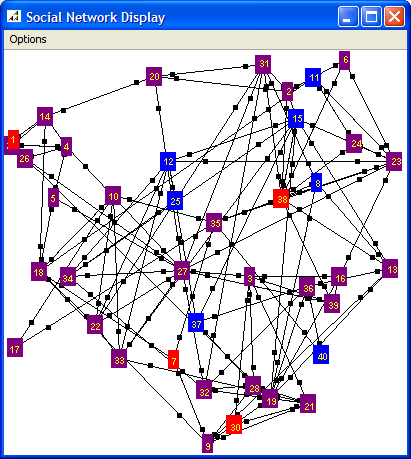Self-Radicalization Ecology Model - Website
How Do Terrorist
Cells Self-Assemble? Insights from an Agent-Based Model
Abstract
|
Since the 9/11 attacks, there has been a steady increase in the incidence of self-starter terrorist plots in both Western Europe and the United States. Past studies of self-starter terrorism focused on how persons come to acquire radical beliefs but take the next step for granted - the transformation of isolated radical individuals into cells or networks that produce violent collective action. To better understand this second step we operationalized radicalization with precise network measures and distinguished between four types of radicalization scenarios. We then constructed an agent-based computational model of radicalization and validated its predictions with empirical data. Based on this model we characterized the factors that contribute to radicalization as well as deradicalization. Finally, we extended radicalization theory by identifying specific network mechanisms such as occlusion, encapsulation, and magnet-rewiring by which radicals self-organize. Our findings may allow us to distinguish the conditions that lead to small transient cells from conditions that lead to large long-lasting terrorist organizations. Paper Download
Genkin M., Gutfraind A. How Do Terrorist Cells Self-Assemble? Insights from an Agent-Based Model. SSRN Working Paper. |
Installation and
Running Instructions
· System Requirements:
o Java 1.5 or greater (you might need to download it from Sun's website)
o Tested on Windows XP, Vista and RedHat Linux 2.6 (but should work on most platforms)
· Download the zipped simulation program and the support libraries (support libraries from the REPAST simulation toolkit, version 3.1)
· Extract the contents of the zip. There will be a jars subdirectory under the directory where you saved radicalization.jar
· To run the model:
o Double-click on the main model file
Documentation &
Extras
· README and releaseNotes.txt
· Source code: available from opening radicalization.jar
· Archive file containing raw simulation output files and the batch files that created them.
Troubleshooting
· If you see cannot find main class, make sure that you have support jar files under the jars/ directory.
· Please do not hesitate to contact the authors if you any trouble with the software.
